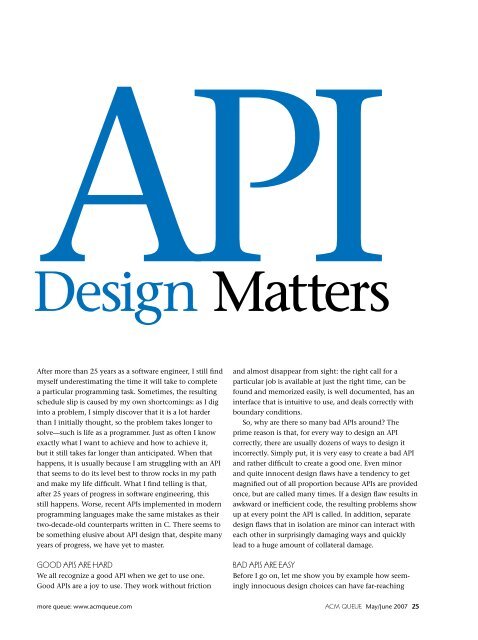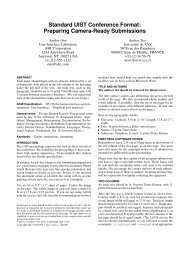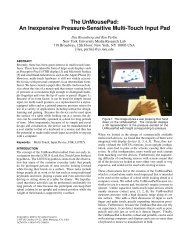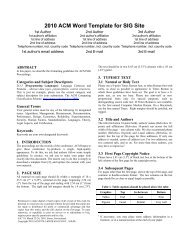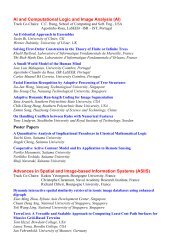API Design Matters Stonebraker and Seltzer - RabbitMQ
API Design Matters Stonebraker and Seltzer - RabbitMQ
API Design Matters Stonebraker and Seltzer - RabbitMQ
Create successful ePaper yourself
Turn your PDF publications into a flip-book with our unique Google optimized e-Paper software.
en)<br />
<strong>API</strong><br />
<strong>Design</strong> <strong>Matters</strong><br />
After more than 25 years as a software engineer, I still find<br />
myself underestimating the time it will take to complete<br />
a particular programming task. Sometimes, the resulting<br />
schedule slip is caused by my own shortcomings: as I dig<br />
into a problem, I simply discover that it is a lot harder<br />
than I initially thought, so the problem takes longer to<br />
solve—such is life as a programmer. Just as often I know<br />
exactly what I want to achieve <strong>and</strong> how to achieve it,<br />
but it still takes far longer than anticipated. When that<br />
happens, it is usually because I am struggling with an <strong>API</strong><br />
that seems to do its level best to throw rocks in my path<br />
<strong>and</strong> make my life difficult. What I find telling is that,<br />
after 25 years of progress in software engineering, this<br />
still happens. Worse, recent <strong>API</strong>s implemented in modern<br />
programming languages make the same mistakes as their<br />
two-decade-old counterparts written in C. There seems to<br />
be something elusive about <strong>API</strong> design that, despite many<br />
years of progress, we have yet to master.<br />
Good <strong>API</strong>s ArE HArd<br />
We all recognize a good <strong>API</strong> when we get to use one.<br />
Good <strong>API</strong>s are a joy to use. They work without friction<br />
more queue: www.acmqueue.com<br />
<strong>and</strong> almost disappear from sight: the right call for a<br />
particular job is available at just the right time, can be<br />
found <strong>and</strong> memorized easily, is well documented, has an<br />
interface that is intuitive to use, <strong>and</strong> deals correctly with<br />
boundary conditions.<br />
So, why are there so many bad <strong>API</strong>s around? The<br />
prime reason is that, for every way to design an <strong>API</strong><br />
correctly, there are usually dozens of ways to design it<br />
incorrectly. Simply put, it is very easy to create a bad <strong>API</strong><br />
<strong>and</strong> rather difficult to create a good one. Even minor<br />
<strong>and</strong> quite innocent design flaws have a tendency to get<br />
magnified out of all proportion because <strong>API</strong>s are provided<br />
once, but are called many times. If a design flaw results in<br />
awkward or inefficient code, the resulting problems show<br />
up at every point the <strong>API</strong> is called. In addition, separate<br />
design flaws that in isolation are minor can interact with<br />
each other in surprisingly damaging ways <strong>and</strong> quickly<br />
lead to a huge amount of collateral damage.<br />
BAd <strong>API</strong>s ArE EAsy<br />
Before I go on, let me show you by example how seemingly<br />
innocuous design choices can have far-reaching<br />
ACM QUEUE May/June 2007 25


